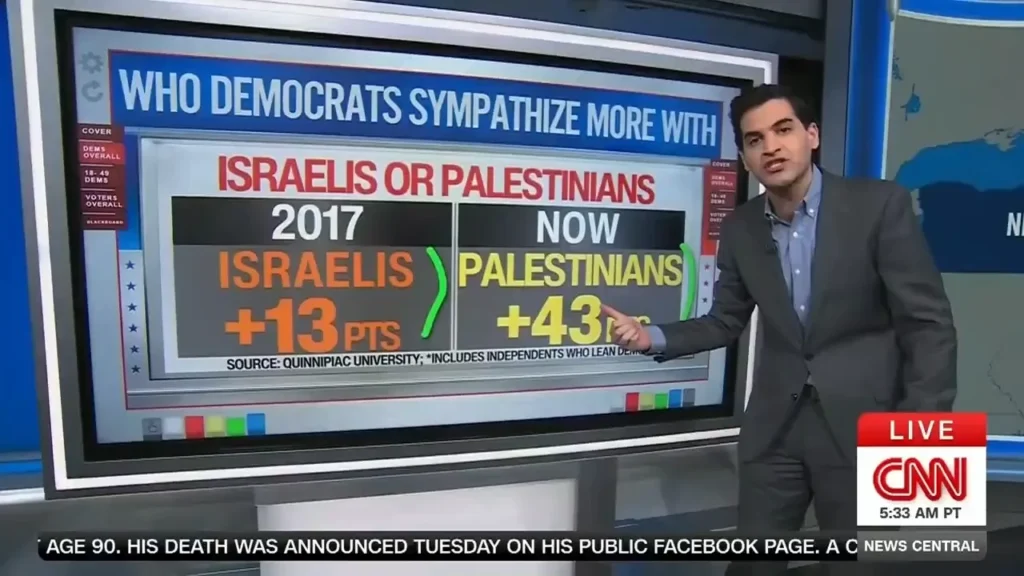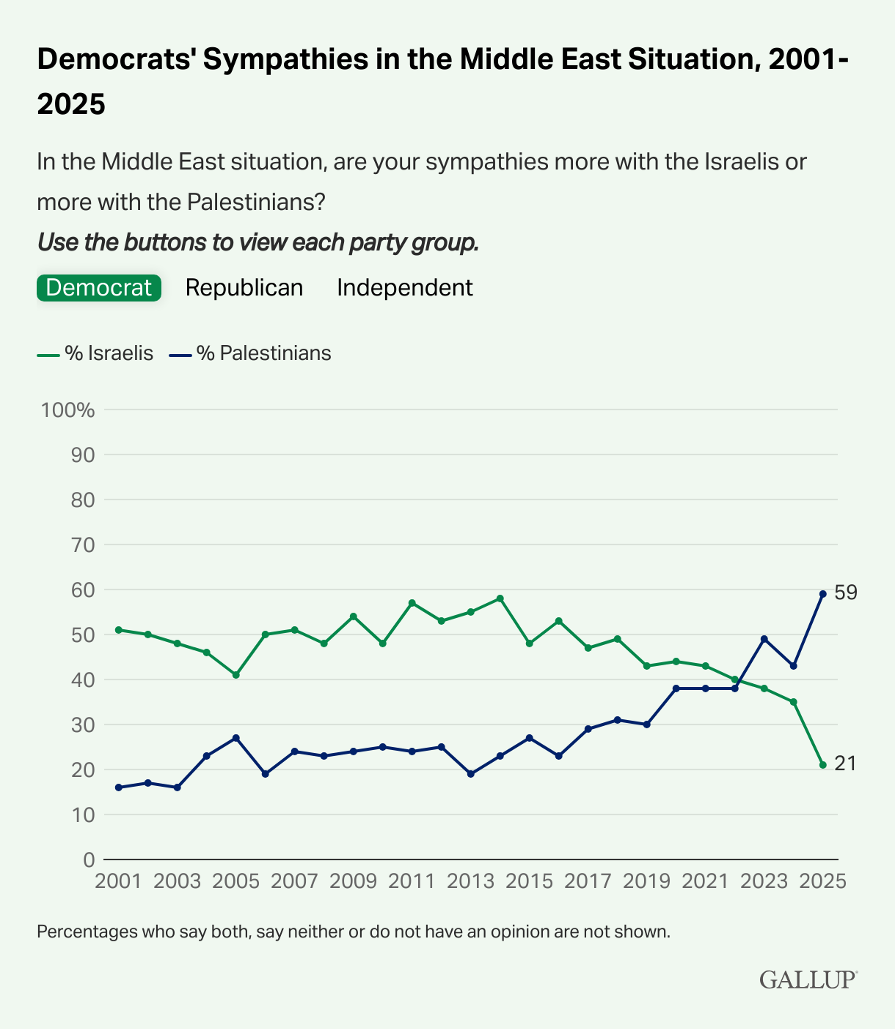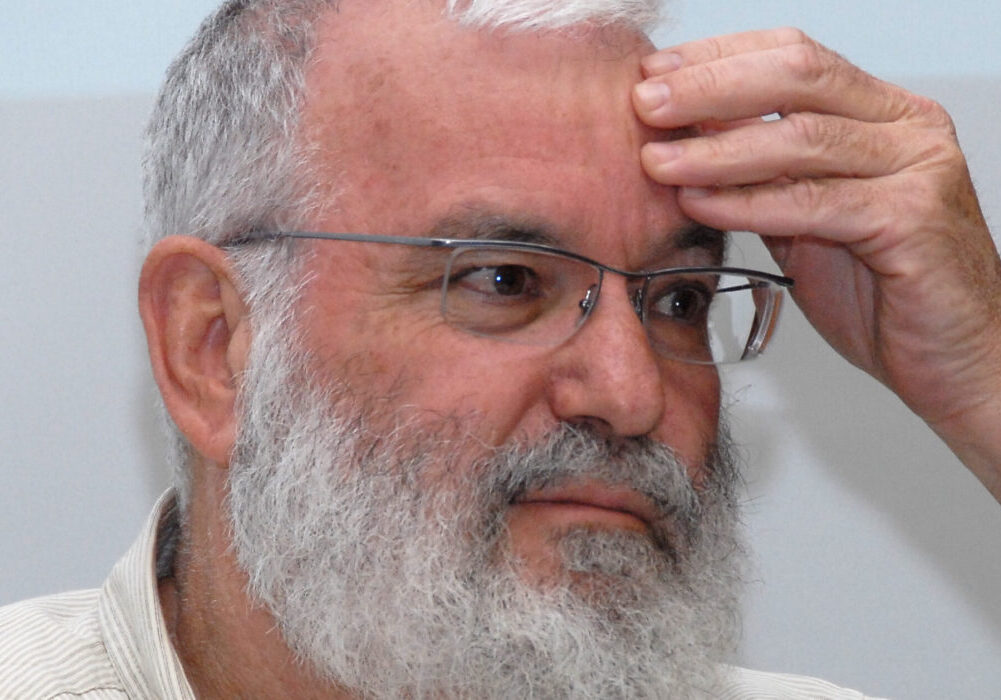Australia/Israel Review
Washington Heights: Relationship troubles – The anti-Israel evolution of the US Democratic party
Sep 19, 2025 | Danielle Pletka

It has become a truism to suggest that the US-Israel relationship is set in bedrock. For years, the country was referred to, without rancour, as the 51st state. Over more than 50 years, the United States has subsidised both the Israeli economy and the Israeli military to the tune of hundreds of billions of dollars. Nor was that support, for the most part, controversial. No longer.
Understanding the history is critical, because the relationship was neither founded nor moored in the way many assume. Far from a project of the American Jewish community – the largest outside of Israel itself – American support has, for more than a century, been anchored in Anglo-American Protestant Evangelism. In his seminal book, Arc of the Covenant, Walter Russell Mead traces this history: Calls for “Palestine” to be given to the Jewish people began in 19th century America. And, as Mead notes wryly, were endorsed by the New York Times before it was Jewish-owned, only to be abandoned once Jews took over the paper. Towards the end of World War I, former President Theodore ‘Teddy’ Roosevelt said, “there can be no peace worth having” until “the Jews [are] given control of Palestine.”
True, under Harry Truman, America was the first to recognise the new Jewish state in 1948, but the so-called ‘special relationship’ did not begin under Truman. Indeed, for the first quarter century of US-Israel relations, Washington did little to support either the Israeli economy or the Israeli military. Between 1949 and 1973, US assistance to Israel totalled US$3.1 billion, substantially less than it currently receives (in mostly military assistance) per annum. Even as aid began to ramp up, the sums remained relatively small – US$16.3 billion between 1970 and 1979.
It was under the Nixon Administration that the current US-Israel relationship began. Mead argues persuasively that, far from a Jewish-American led love affair, Washington’s newfound commitment to Jerusalem was rooted in Nixonian realpolitik. Although in the years prior to the 1967 Six Day War, Israel’s military prowess shone in comparison to its feckless Arab neighbours, it was only after that 1967 rout that the United States began to think of Israel in its own strategic context. With the backdrop of the Cold War, and looking at Soviet-aligned Egypt and Syria, Israel suddenly appeared to be more than just a sentimental cause.
Politically, Israel had always enjoyed support, albeit largely rhetorical, from the Democratic Party. Since the birth of the Jewish state, the American left vibed comfortably with Israel’s socialist-leaning leadership, which dominated for the first decades of Israel’s existence. Collective farms (kibbutzes), cooperative farms (moshavs), socialist institutions, and the pre-World War II eastern European-nostalgic small “L” liberalism resonated deeply with the Democratic Party. And much less so with a Republican Party that viewed the Middle East through a prism of reliable energy, and with little sympathy for Lenin-adjacent economic ideals.
If the Six Day War and the subsequent 1973 Yom Kippur War – by the end, another display of magnificent Israeli military prowess – contributed to an inflection point in Republican views of Israel, the same was true for the Democratic Party. Less visible in Democratic halls of power, the worm was beginning to turn at a venue that will be familiar to all today: the college campus. Still in the throes of violent anti-Vietnam War protests, the vanguard of the American student far left, Students for a Democratic Society (SDS), in lockstep with the Communist Party USA, turned with venom against the Jewish state. Daniel Rubin, a Jewish SDS Central Committee member, focused his ire on American Jewish support for Israel: “They find themselves on the side of US imperialism in opposition to national liberation movements and on the side of rabid anti-Communist cold-warriors.”
Disproportionately represented in both SDS and CPUSA, American Jews gave no quarter to the new, “imperialist” Israel. Former SDS leader Mark Rudd summed up the issue of Israel years later: “It distinguished the true anti-imperialists from the liberals.” Luckily, for Israel, it was the liberals who would continue to dominate the Democratic Party for years to come. Until now.
If the inflection point of the Nixon Administration mainstreamed support for Israel in both major American political parties, it would be the Obama Administration that marked the second major turning point, in this case, a break by the liberal left with support for Israel.
Born in 1961, Obama represented more than a simple break with the post-World War II generations that had spawned his two predecessors. In simple terms, he didn’t see the Israel of 1948 to 1967. Rather, he saw a modern, mighty and wealthy power that, far from being a bastion of democracy and human rights in a region with little of either, was the root of all of America’s woes in the Middle East. Israel, in Obama’s world view, was the reason America was constantly mired in “forever wars” in the region; the hindrance that was stymieing his desired “pivot” to Asia.
Obama would be the first president for whom the 1960s’ radical framing of Israel made sense. Still, his party and its base were not truly with him. American Jews (less than 3% of the population) vote overwhelming Democrat and, while support for Obama’s Iran-centric view of the Middle East was hesitant in this tiny slice of the base, the rest of the party was in the process of adaptation.

The Gallup chart above notes the moment when the Democratic Party base shifted. Most importantly, the moment more members of the party support Palestinians over Israel came before October 7, 2023. The changeover happened in 2022. Obama was a bellwether, but, even in 2019, as the rabidly anti-Israel House of Representatives “Squad” – Rashida Tlaib, Ilhan Omar, Ayanna Pressley and Alexandria Ocasio-Cortez – took office, their antipathy towards Israel was a minority view in the Democratic Party.
Fast forward to 2025, and the Squad/Bernie Sanders fringe of the American left is beginning to look like the mainstream of the Democratic Party. Where Republicans have completed their transformation into the pro-Israel American political party (with some notable exceptions), the Democrats are also close to completing their own transformation.
In a recent vote on two Sanders US Senate bills restricting arms sales to Israel, a resolution barring the sale of assault rifles to Israel won 27 Democrats, while another to block US$675 million in arms sales won 24. There are 45 Democrats in the Senate, joined by two Democrat-caucusing independents. In other words, more than half of the Senate Democratic caucus supported blocking arms sales to Israel while it is at war. The numbers are all the more remarkable given that the Senate has historically been a bastion of bipartisan support for Israel, and the current Democratic leader is Chuck Schumer of New York, the highest-ranking Jew in American politics.
What does this all mean for the future of the US-Israel relationship? Simply, once the heart of global support for the Jewish state, the American left is following the rest of the democratic world’s left-leaning political parties and turning against Israel. And, as Jew-hatred races toward epidemic levels the world over, this will likely mark the beginning of a new and dangerous period for the Jewish people, not only in the US, but wherever they are.
Danielle Pletka is a distinguished senior fellow at the American Enterprise Institute and the host, with Marc Thiessen, of the podcast What the Hell Is Going On? and the related Substack.
Tags: Israel, Palestinians, United States






